Apr 3 2018
Second OTW row of the season – rating up!
Sunday
No training. Too jetlagged and also having a cold. We did make a nice excursion to a nearby Chateau.
Monday
Too strong wind for rowing. I did a one hour swim in the indoor 50m pool.
Tuesday
I created my new training plan for the coming period today, and I was able to weave in quite a lot of the sessions suggested by our club’s head coach. This is not always the case, but this time it worked out.
We’re going out in the eight tomorrow, and I am going to strongly suggest that that will be a steady state session. Some in this Masters rowers group have a tendency to want to do speed work on every outing, but I think that a nice technique row is more appropriate for our first row of the season. That was the reason for me to do the 4x5min/4min at 28/30spm today, so I could claim having it already done, and needing a steady state session.
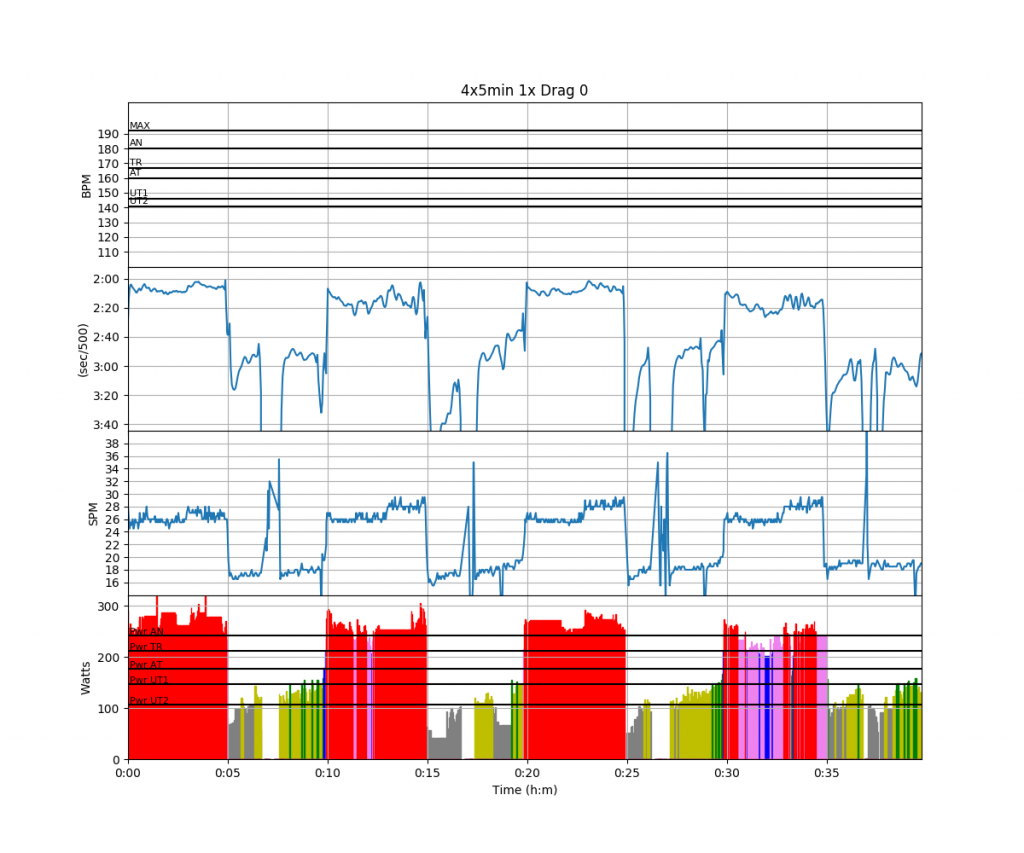 The training was “4x5min/4min with 5min as 3min @ 28spm, 2min @ 30spm”. I decided to reduce the recommended stroke rates by 2, as I was rowing in a single (and because I haven’t rated up yet this year).
The training was “4x5min/4min with 5min as 3min @ 28spm, 2min @ 30spm”. I decided to reduce the recommended stroke rates by 2, as I was rowing in a single (and because I haven’t rated up yet this year).
It was pretty windy and choppy when I launched, so I sought shelter in the gorge. There is a stretch that is a little longer than 1km and pretty straight, so there is where I would be doing my 5 minute intervals.
I still haven’t found my OTW rowing routine. Today, I forgot to pack the heart rate belt.
Workout Summary - media/20180403-1715420o.csv
--|Total|-Total-|--Avg--|-Avg-|Avg-|-Avg-|-Max-|-Avg
--|Dist-|-Time--|-Pace--|-Pwr-|SPM-|-HR--|-HR--|-DPS
--|07503|39:59.0|02:39.9|181.0|22.9|0.0|000.0|08.2
W-|04527|19:52.0|02:11.8|256.0|26.6|000.0|000.0|08.6
R-|02979|20:00.0|03:21.4|106.9|19.2|000.0|000.0|07.8
Workout Details
#-|SDist|-Split-|-SPace-|-Pwr-|SPM-|AvgHR|MaxHR|DPS-
00|01186|05:00.0|02:06.5|272.5|26.2|000.0|0.0|09.1
01|01106|05:00.0|02:15.6|251.5|26.8|000.0|0.0|08.3
02|01146|04:52.8|02:07.8|267.0|26.9|000.0|0.0|08.7
03|01089|05:00.0|02:17.7|233.1|26.5|000.0|0.0|08.2
I am pretty happy with the achieved boat speed. There was a big difference between tail wind (first and third intervals) and head wind (second and fourth intervals) and in the fourth interval I was both tired and steering, as I ended up doing the 28spm bit in the first part of the windy stretch.
In the Flex charts, you can see how I got tired, and especially the Wash number deterioriated (or was it the steering).
I also had a problem with the Empower Oarlock disconnecting and reconnecting several times during the row.I just upgraded the firmware Perhaps it will help.
Today was also the first row with the Quiske pod. I used the sensor pod under the seat. I was curious to see if there would be any differences between the head wind and tail wind intervals and between the first ones when I was fresh and the last ones. Let’s first look at boat acceleration for the 26spm and 28spm bits.
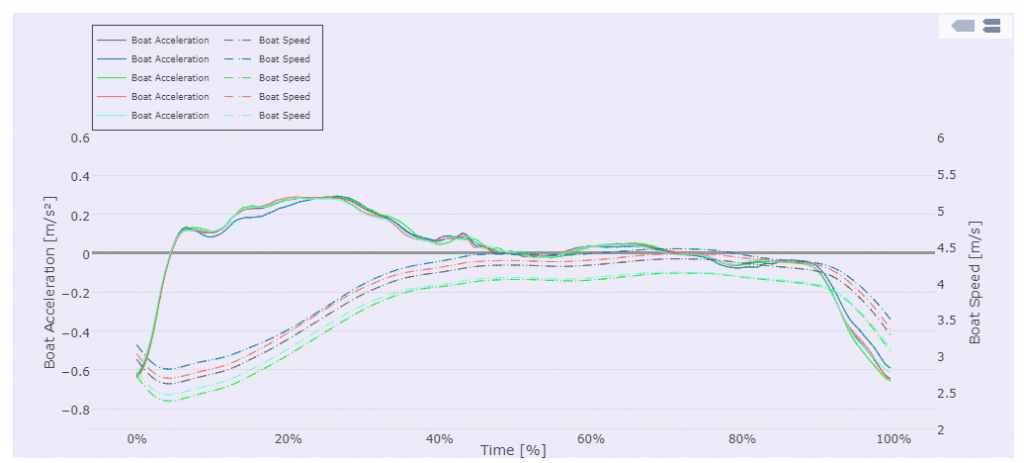
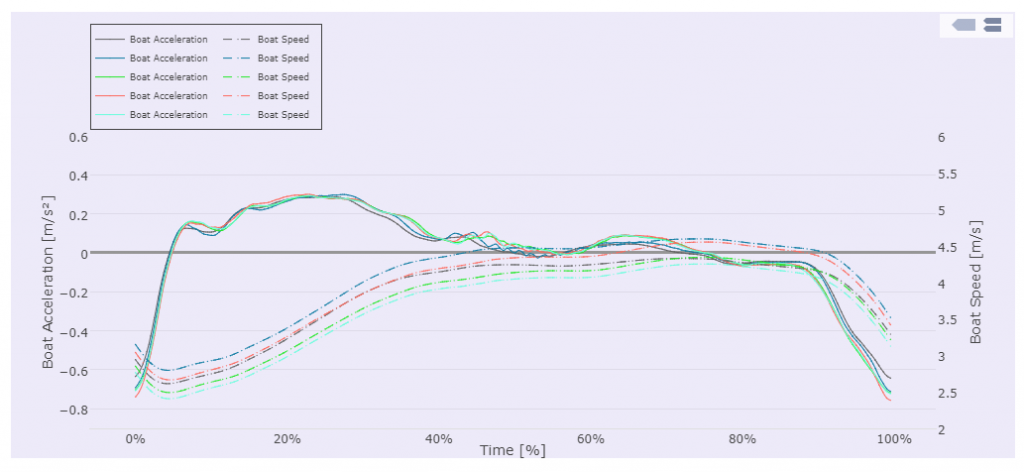
That looks pretty consistent. No big differences between the intervals. A bit more spread in the data in the recovery part of the 28spm acceleration curves, compared to 26spm. These bits, two minutes which I counted as 8×7 strokes to survive them, were pretty hard. I conclude that I was able to row 26spm consistently, but have to work on the recovery at higher stroke rates. The acceleration from the minimum speed (left part of the chart) looks OK to me, but I am curious to see what the Quiske crew thinks of it. In 26spm, you see a slight acceleration (or reduced deceleration) in the very final part of the recovery. I was paying attention to accelerating slightly up the slide in that final part, and taking light catches.
Now, let’s look at the Seat Speed:
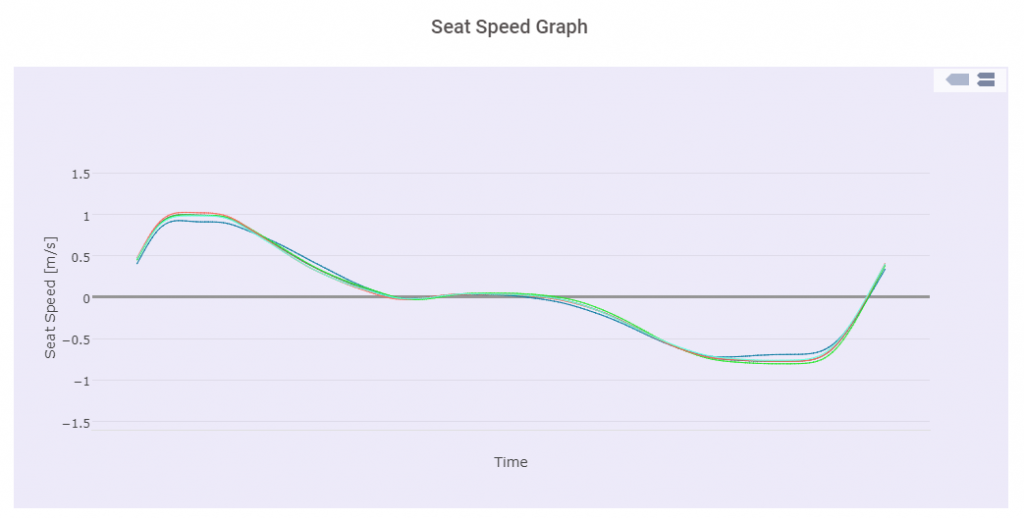
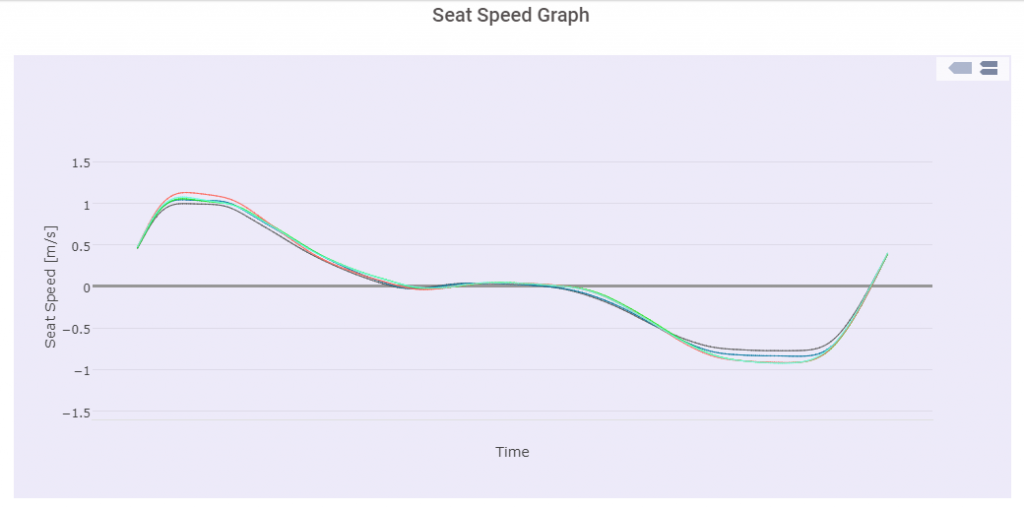
Funny, I can not see that acceleration on the recovery which I could very distinctly feel as a slight leg pull. I guess one would have to compare with a baseline of people who don’t do this.
Another fun thing is that the Quiske file can be exported to a CSV which is compatible with Rowsandall.com. I imported that file and was able to do a couple of nice charts.
I am expecting that seat speed is more or less linear in boat speed and that the seat recovery speed is more independent. This chart is seat speed (drive & recovery) vs boat speed. Here, I am really just exploring the data, to see if I can make sense of it and possibly derive a useful technique metric.
It is difficult to make sense of these charts now, but perhaps after a couple of rows I will start to understand.
I have also created a data set with all the data from the two rows. If I find time tomorrow, I will do some correlation analysis. Big fun!
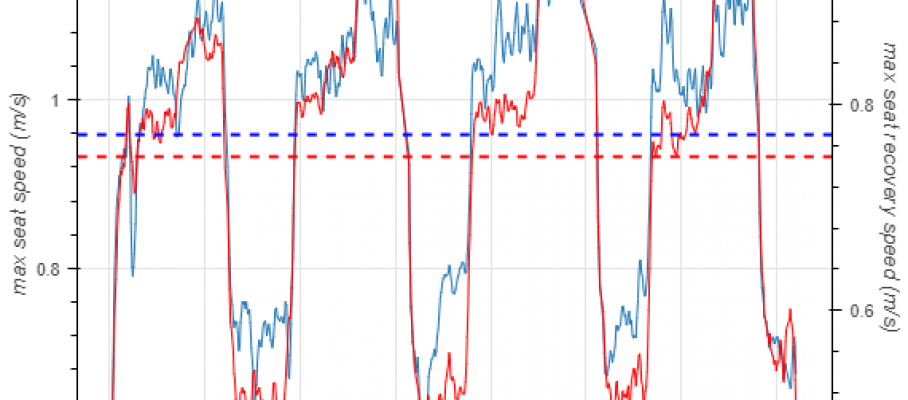
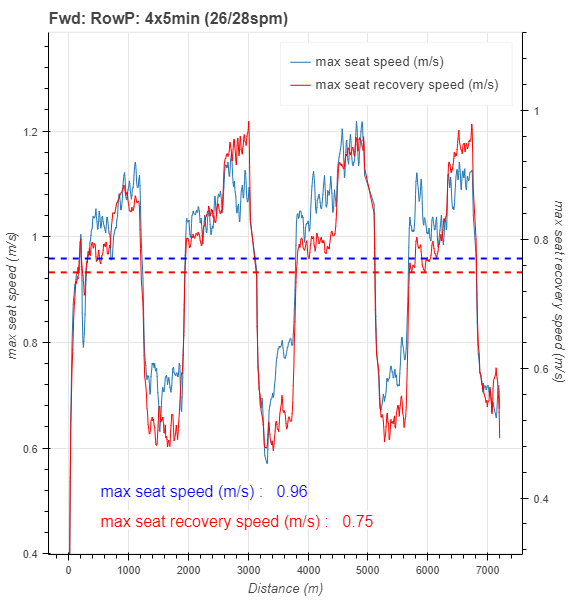
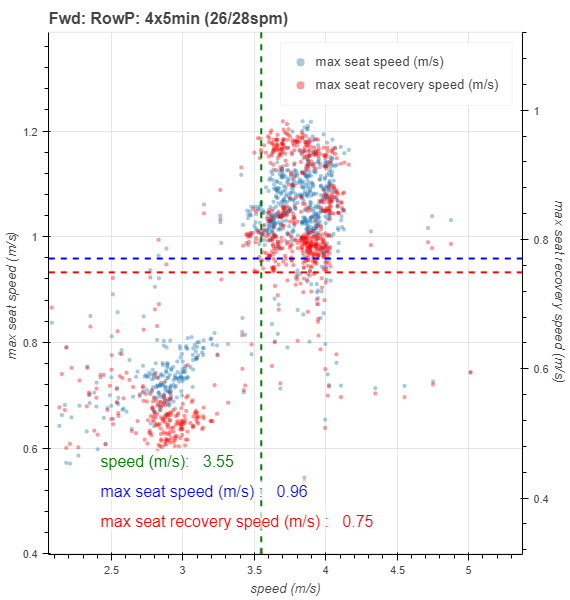
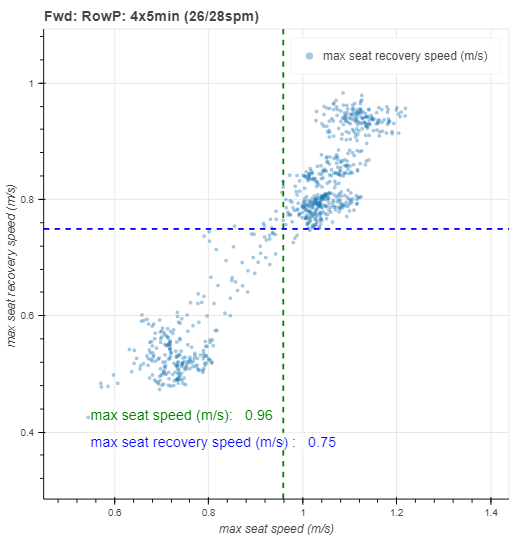
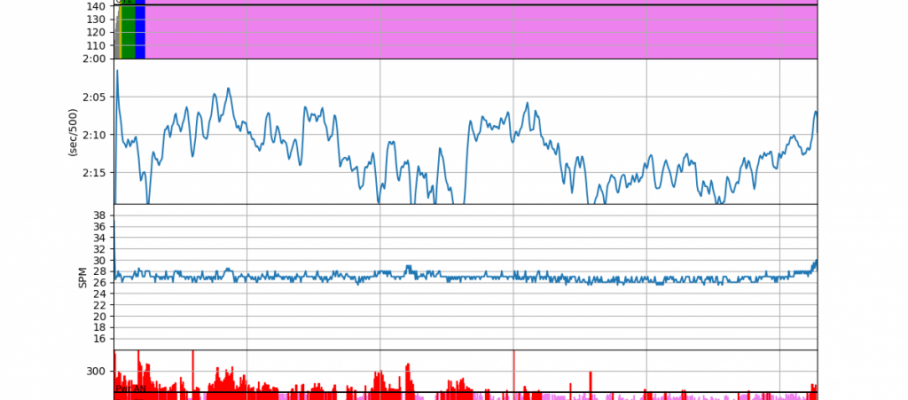


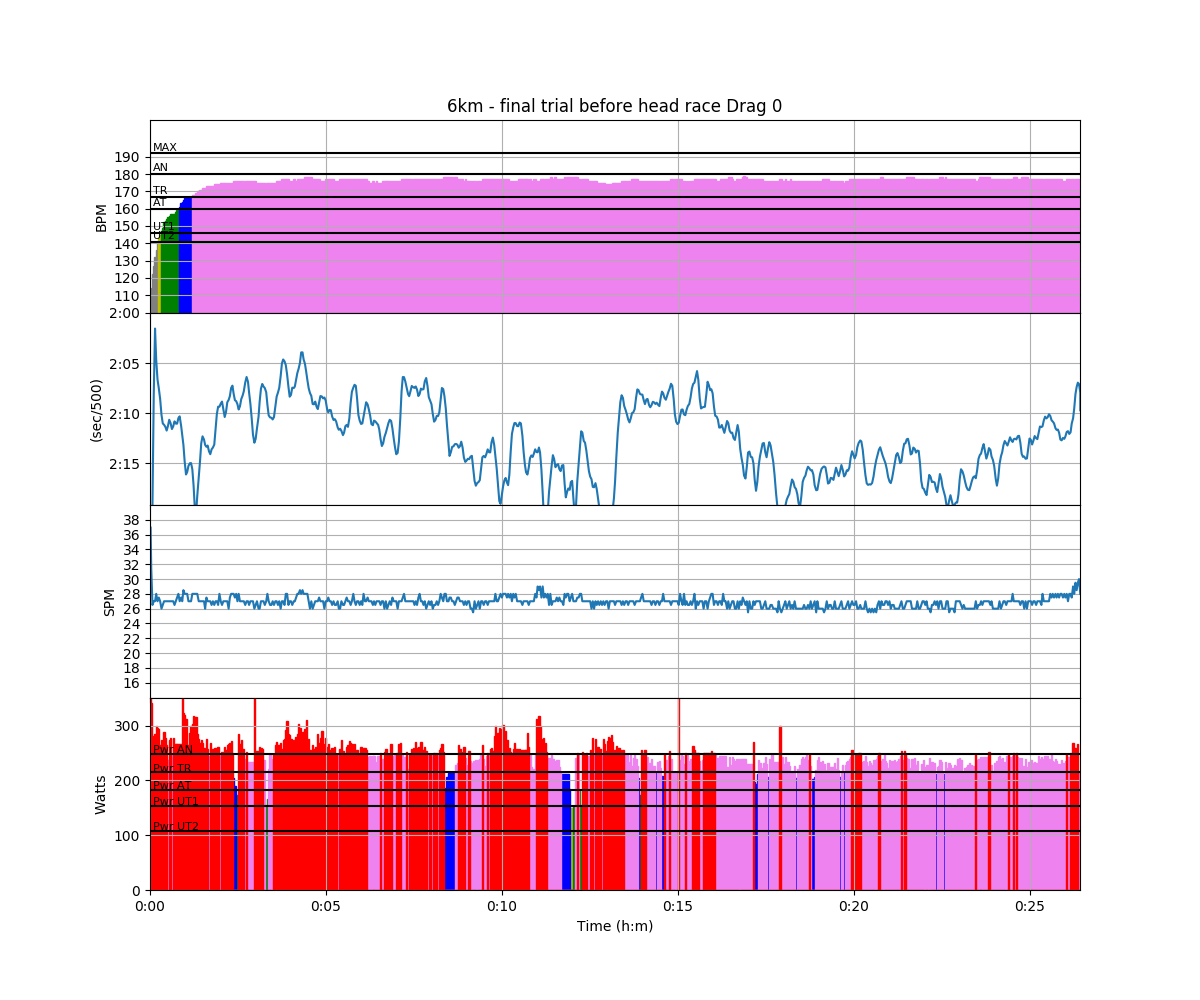
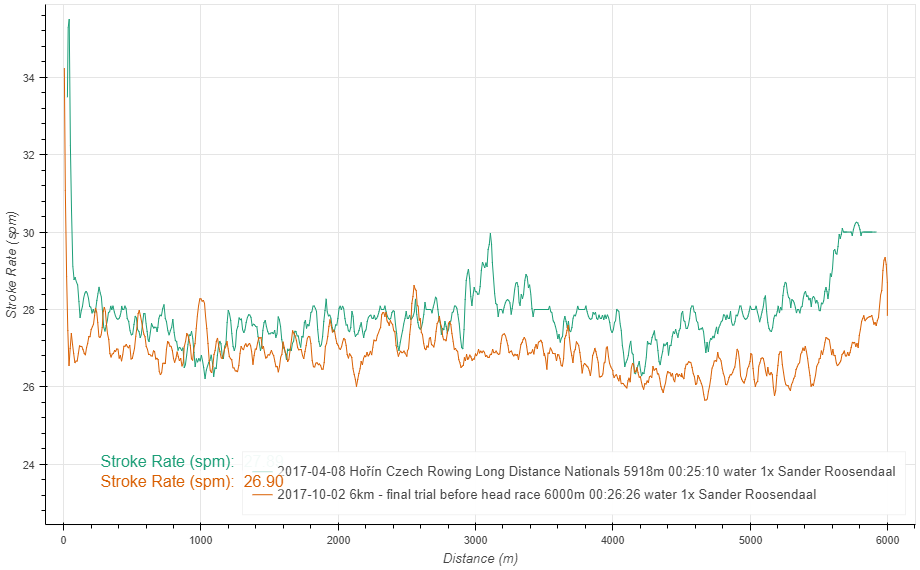
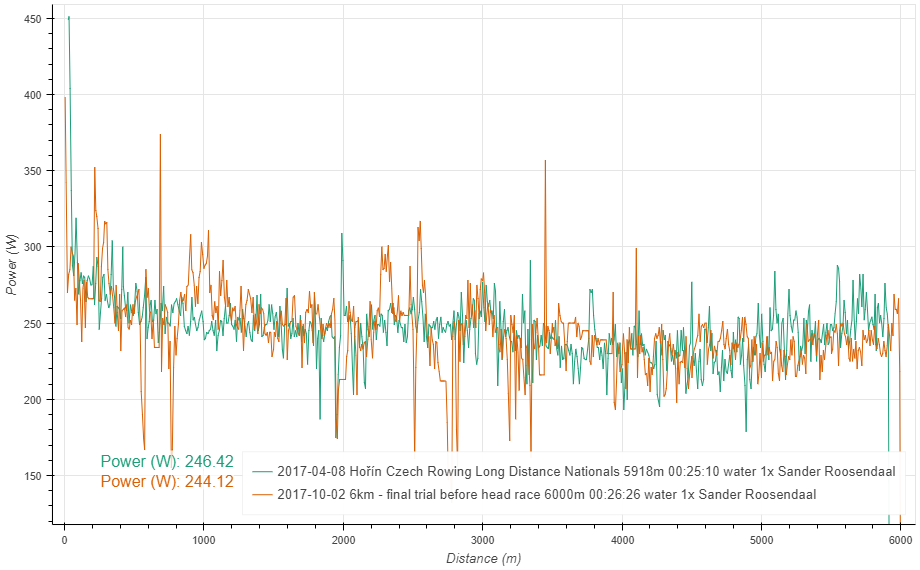
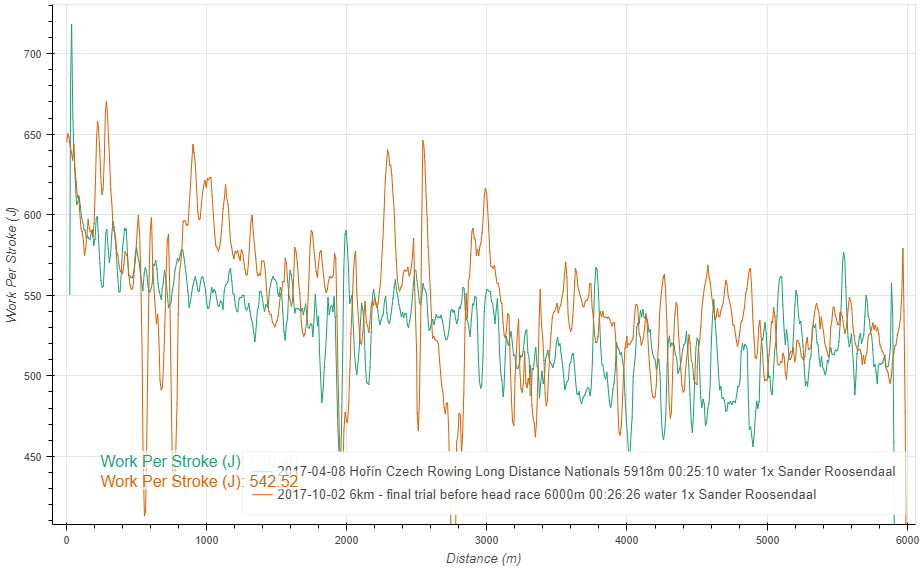
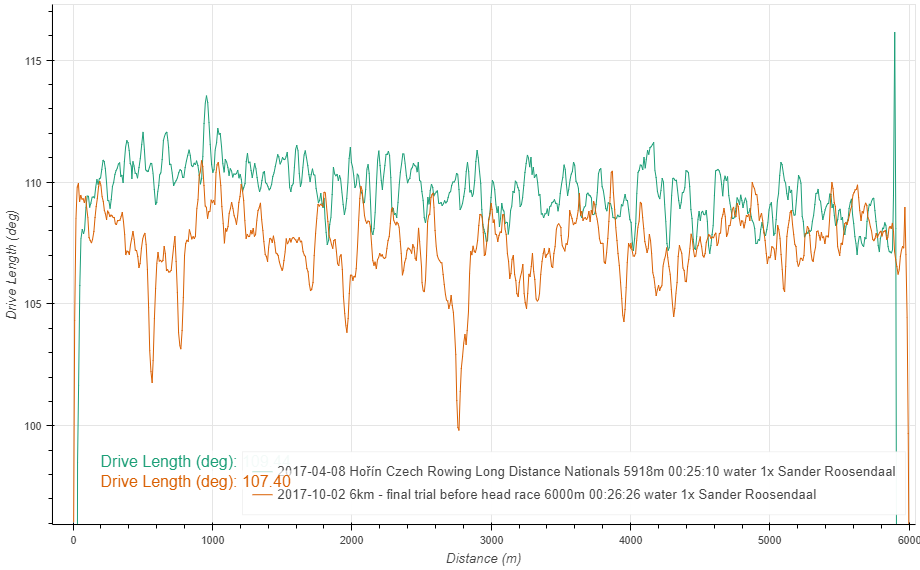
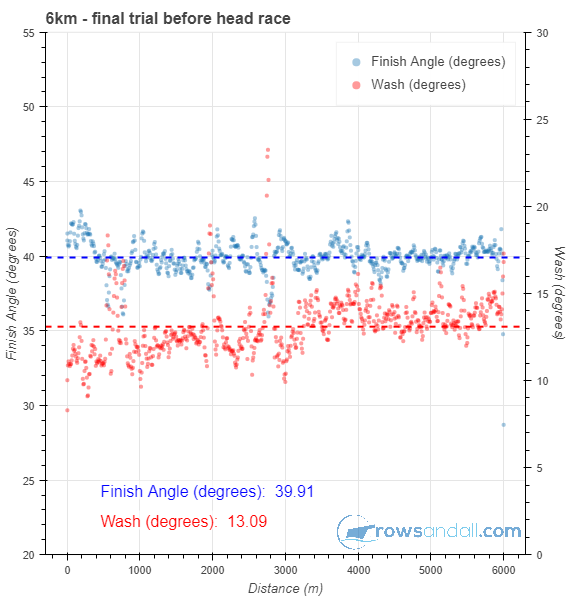
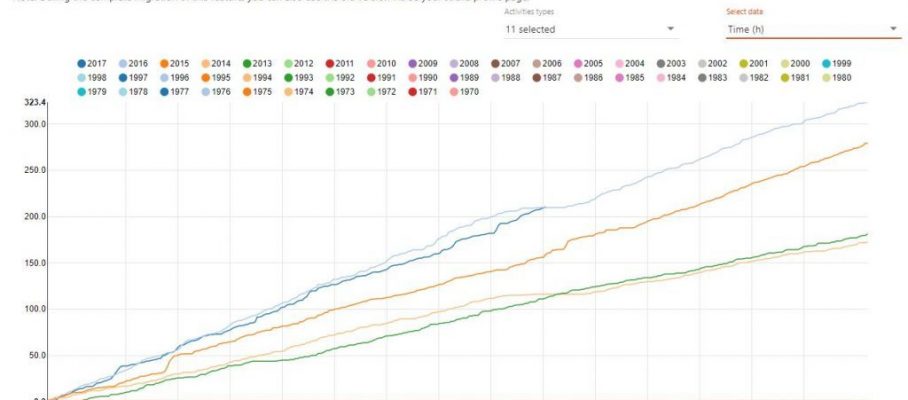
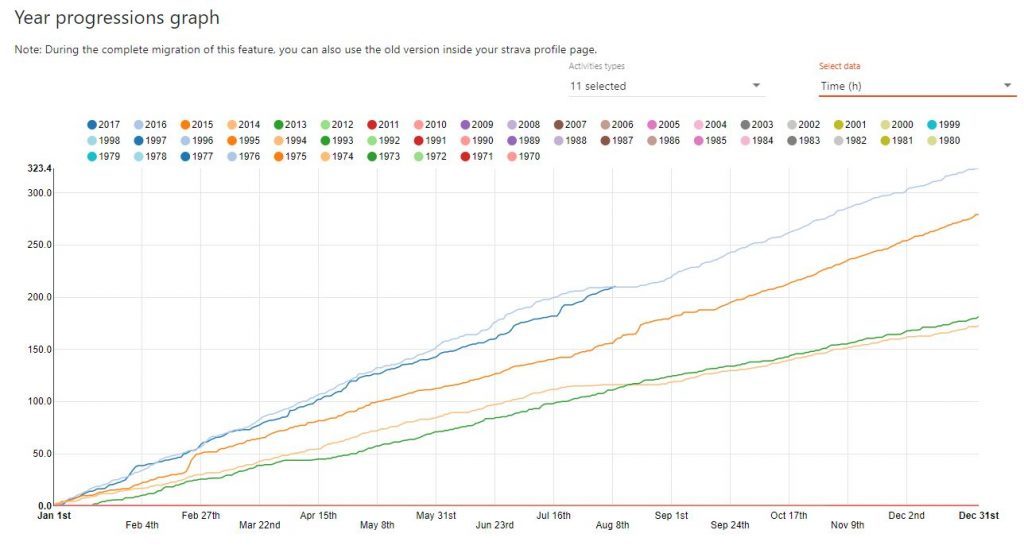
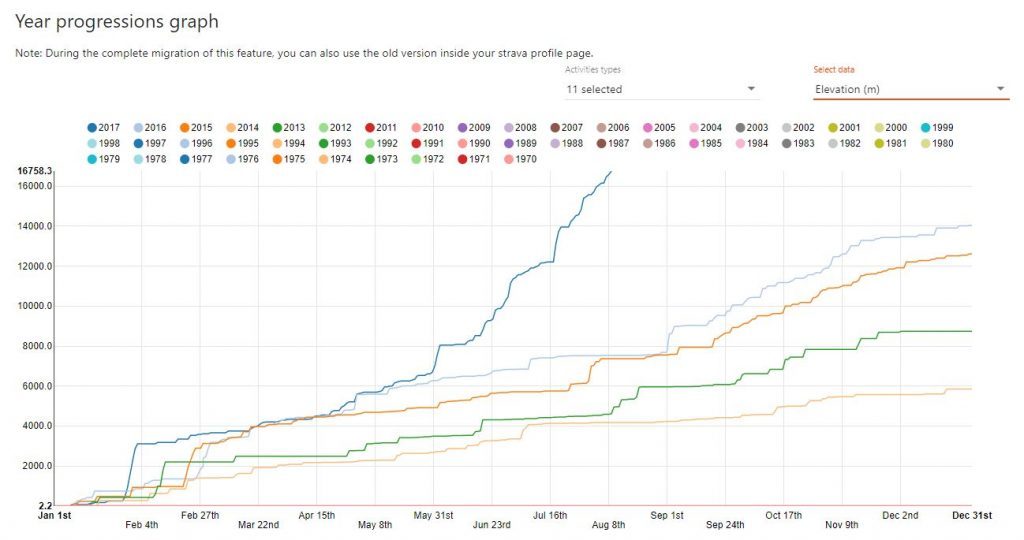
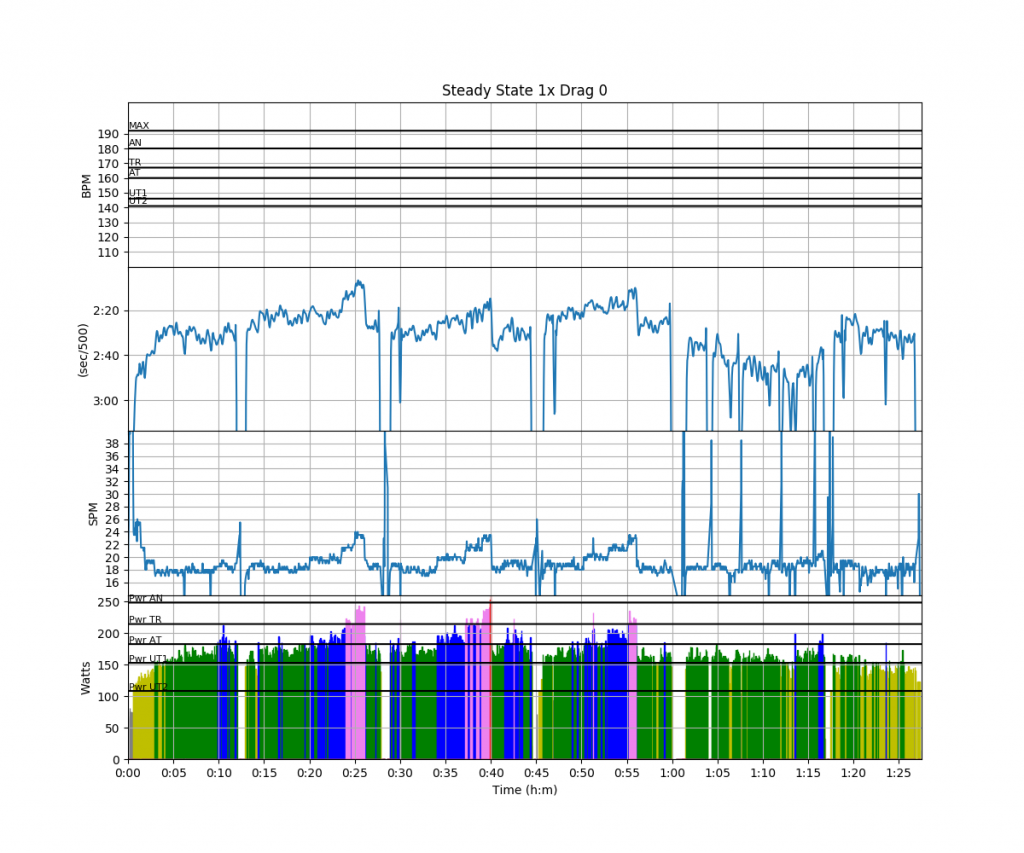
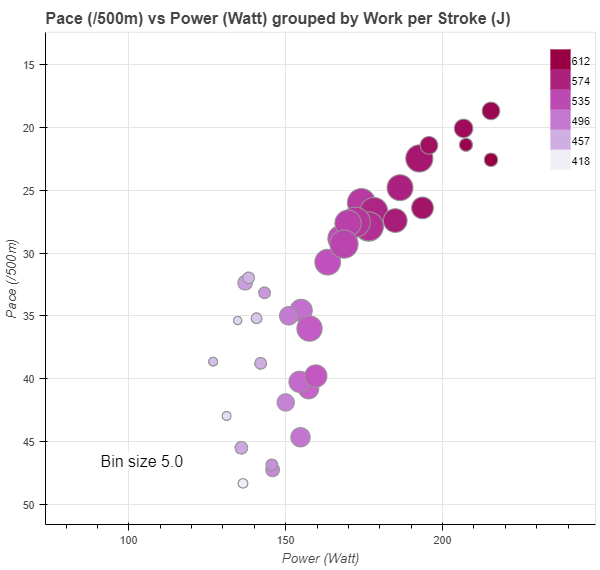
Apr 7 2018
Saturday – A Confrontation with my Single Rowing Skills
This was another planned hard workout. On Thursday and Friday, I had to work long and I didn’t have time for rowing. I felt pretty bad about missing two sessions and was prepared to make this an extra hard one to compensate.
A nice 2x3km, with a 5 minute break in between. Instructions from the coach. First one in 26spm, second one in 28spm. He writes instructions for pairs and fours, and has explained me many times that singles rowers subtract 2 from the SPM values. So I was supposed to do this at 24spm and 26spm. Of course I forgot.
It doesn’t work like that.
I arrived at the club at 9:30, just in time for my sons to start their training. I quickly changed to rowing gear (shorts, it was only 9 degrees but very sunny).
When we arrived the lake showed its mirror flat side, but the weather forecast had predicted a pretty strong wind, so I wasn’t sure it would remain flat. When I launched and during the warming up, the water was still nice, and I didn’t notice that the tailwind slowly increased in strength.
I turned around at Rokle and got ready for my first 3k. Go!
A few minutes later it was the 20th minute in the chart below.
It was a head wind and it was stronger than I had expected, and little waves were starting to build.
All this was adding up in my brain, and I stopped abruptly. Then continued technique drills at low stroke rate.
At Sirka, I turned around and drank some water, then got ready for Plan B – do the second 3km in 24spm and focus on taking a light catch. Even in the tailwind, the rowing wasn’t easy. The waves were getting bigger, and I was not as fresh as I wanted.
I held that for 10 minutes, then stopped.
It wasn’t to be, today.
I did run the Quiske app during the “intensive” parts of this session, and the charts are shown above. The lines are averages over pretty short time intervals. I think they are the average over about 10 strokes maximum, perhaps fewer. The Black line is the average over the entire session. The curves look pretty close to the single stroke ones that the Quiske RowP app shows during the row. I started an interesting discussion on the in-stroke data over at the Rowing Data Analysis Facebook Group. I am thinking deeply about that first acceleration bump around 7% into the stroke. According to Kleshnev, having this bump, i.e. a local maximum in the acceleration, is good.
The wiggles around 45% of the stroke are bad. These are my fast hands away. At the end of the second 3km stretch, I did a little photo shoot. First, the selfies:
Then, the scenery:
And, finally, the rowing kit:
You cannot see the Android phone with the RowP app, because I had taken it out of the RAM mount (on the right, behind the wing rigger) to take the pictures. Also invisible is the RowP pod under the seat. Seat dynamics didn’t reveal any interesting insights, so I didn’t bother adding the pictures to the blog.
Yes, this was a confrontation with the skills of a rower who has spent more than four months on the erg. I am missing the subtlety in the catch. I am not able to dose my power wisely. I get thrown off by little waves. I guess all this will improve in the coming month.
It has to.
By sanderroosendaal • Uncategorized • 0 • Tags: 1x, fail, hard distance, OTW, rowing, single, training